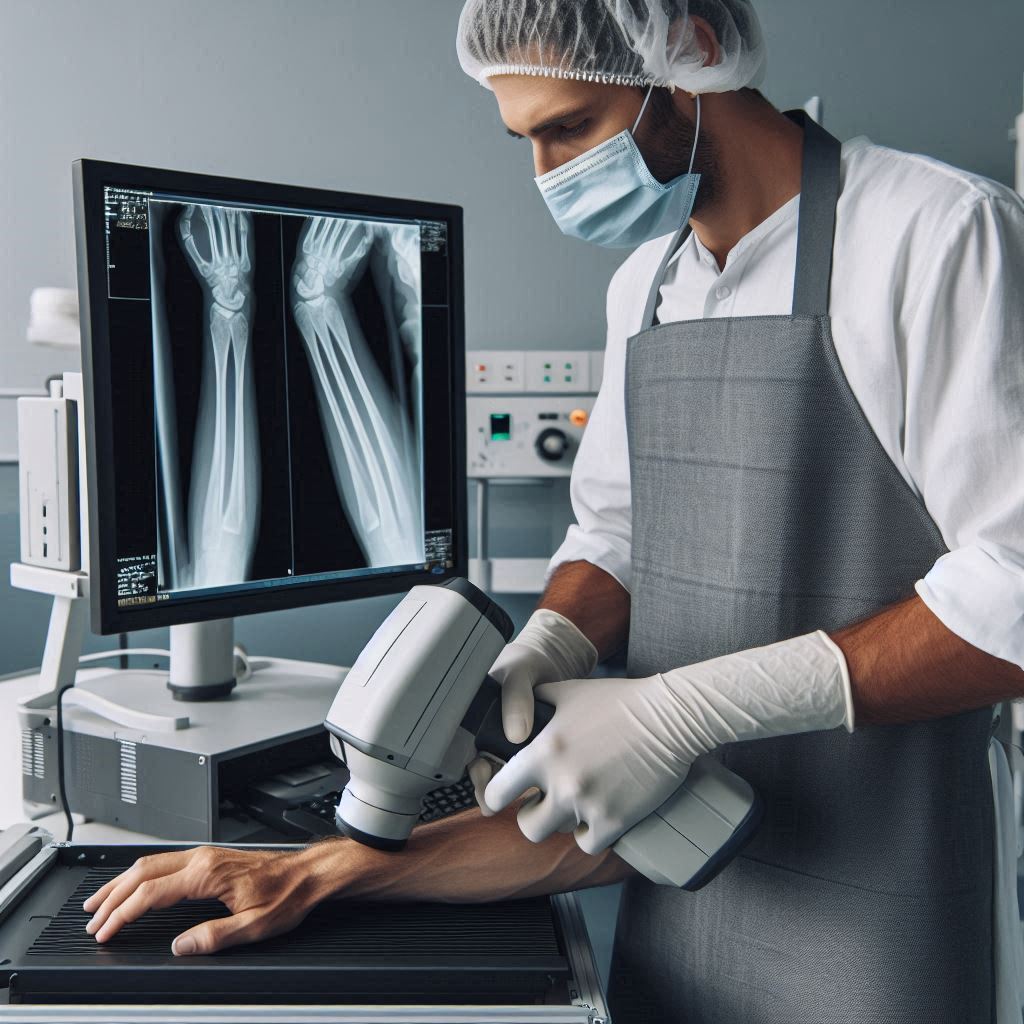
NDT ( RT ) Theory and Demonstration
Trainers feedback
0
(0 reviews)
Chaitanya Purohit
Consultant
Course type
Instructor led live training
Course duration
2 Hrs
Course start date & time
Coming in Next Month
Language
English
This course format is where trainer will explain you the subject via online live session. Date and time are not decided yet but it will be planned within next 2 weeks after you enroll & pay for this course?. Get in touch with our team if any clarification is required.
Why enroll
Mastering Non-Destructive Testing (NDT) techniques, specifically Radiographic Testing (RT), can enhance your career in quality control, inspection, and testing, leading to roles like NDT Technician, Quality Inspector, or Testing Engineer, with median salaries ranging from $65,000 to over $110,000. You'll gain expertise to detect internal defects and anomalies using X-rays and gamma rays, ensuring product integrity and reliability in industries like aerospace, energy, and manufacturing, where safety and precision are paramount. This certification will also enable you to work on critical components, such as welds and castings, making you a valuable asset to employers.
Course details
This course offers a comprehensive study of Radiographic Testing (RT), a widely used non-destructive testing (NDT) method that utilizes X-rays or gamma rays to inspect the internal structure of materials and components. Emphasizing both theoretical knowledge and practical skills, the course covers the principles, equipment, and techniques of RT, along with hands-on demonstrations to prepare students for effective and accurate inspections.
Course suitable for
Aerospace Automotive HVAC Mechanical Production
Key topics covered
- Introduction to NDT and Radiographic Testing (RT)
- Overview of Non-Destructive Testing (NDT) methods and their role in quality control and safety
- Basic principles of Radiographic Testing (RT) and its advantages in detecting internal defects
- Common applications of RT across industries such as aerospace, oil & gas, manufacturing, and construction
- Fundamentals of Radiographic Testing (RT)
- Introduction to ionizing radiation: X-rays and gamma rays
- How RT works: The interaction of radiation with materials and its ability to reveal internal discontinuities
- The role of film or digital detectors in capturing radiographic images
- The concept of image contrast and density, and how these relate to material thickness and defect types
- Radiographic Testing Equipment
- Overview of RT equipment: X-ray machines, gamma-ray sources, film and digital radiography systems
- Safety features and operational components of RT equipment
- Selection of appropriate radiation sources: X-rays vs. gamma rays (e.g., cobalt-60, iridium-192)
- Calibration and setup of radiographic systems for accurate results
- Principles of Radiation and Image Formation
- How radiation passes through materials and the principles of absorption, attenuation, and scatter
- The formation of radiographic images and how defects cause changes in radiation transmission
- Understanding image quality: resolution, contrast, and exposure settings
- Factors influencing the final radiograph: exposure time, radiation energy, film type, and object thickness
- Techniques for Conducting Radiographic Inspections
- Step-by-step RT inspection procedures: setup, exposure, image development/processing
- Radiographic inspection techniques: single-wall, double-wall, and panoramic exposures
- Use of radiographic films, digital radiography (DR), and computed tomography (CT) in inspection
- Importance of proper film or detector positioning for high-quality results
- Calculating exposure times and radiation doses
- Interpreting Radiographic Images
- How to read radiographs and identify potential defects such as cracks, voids, porosity, and inclusions
- Differentiating between real indications and artifacts caused by geometry, shadows, or radiation scatter
- Understanding image density and contrast for defect characterization
- Types of defects typically detected in RT (e.g., linear cracks, incomplete welds, corrosion, or porosity)
- Evaluating defect size, location, and orientation from radiographs
- Safety Considerations in Radiographic Testing
- Radiation safety protocols for operators, technicians, and surrounding personnel
- Understanding radiation exposure limits, shielding, and distance rules
- Use of Personal Protective Equipment (PPE), including lead aprons, radiation badges, and barriers
- Safe handling of radioactive sources (gamma rays) and X-ray equipment
- Regulatory guidelines and safety standards (e.g., OSHA, NRC, IAEA)
- Radiographic Testing Standards and Codes
- Overview of industry standards: ASTM, ASME, ISO, and API related to RT
- Acceptance criteria for defects (size, location, and type) based on RT results
- RT reporting requirements and documentation practices for compliance with standards
- Importance of traceability and the proper handling of radiographs for future reference
- Practical Demonstration and Hands-On Experience
- Live demonstration of the RT process, including exposure setup, radiograph development, and interpretation of results
- Hands-on experience with radiographic equipment: Participants conduct inspections on test samples such as welds, pipes, and plates
- Evaluation of radiographs: Participants interpret results and identify defects in the radiographic images
- Troubleshooting common issues in RT: Overexposure, underexposure, and improper image interpretation
- Report Writing and Documentation in RT
- Best practices for documenting and reporting radiographic test results
- How to create clear and accurate inspection reports, including defect descriptions, images, and measurements
- Creating a radiographic inspection record for compliance with quality assurance and safety standards
- Certification and Competence in Radiographic Testing
- Overview of RT certification levels (Level I, II, III) and the qualifications required for each level
- Importance of maintaining certification through ongoing training and experience
- Role of RT technicians in ensuring the integrity of critical structures and safety of operations
Training details
This is a live course that has a scheduled start date.
Live session
Why people choose EveryEng
Industry-aligned courses, expert training, hands-on learning, recognized certifications, and job opportunities—all in a flexible and supportive environment.
- Industry Veteran
- Trainer Review
$ 20
- $ 0 Early bird discount
Coming in Next Month
Questions and Answers
A: Film radiography uses photographic films to capture the transmitted radiation image, which then requires chemical processing to develop. Digital radiography (DR), however, uses digital detectors to capture the image instantly, allowing immediate review and easier image manipulation. DR offers benefits such as reduced processing time, enhanced image quality, and lower exposure levels. The transition to digital systems is growing due to efficiency and environmental benefits. More info: https://www.ndt.net/article/wcndt00/papers/idn806/idn806.htm
A: Limitations of RT include safety hazards due to ionizing radiation, relatively long exposure and processing times compared to some NDT methods, difficulty in detecting defects oriented parallel to the radiation beam, and the challenge of interpreting images requiring highly trained personnel. Additionally, RT may be less effective on very thick or highly dense components due to reduced penetration. Alternative or complementary methods like Ultrasonic Testing may be used in such cases.
A: Image quality in RT is evaluated based on parameters such as sensitivity, contrast, sharpness, and density. Sensitivity determines the smallest flaw that can be detected, contrast differentiates between materials and defects, sharpness relates to image resolution, and density corresponds to the overall darkness of the radiograph. Quality indicators such as penetrameter image quality indicators (IQI) are used to assess these aspects. Standards like ASTM E1742 provide guidance on image quality requirements.
A: Radiographic Testing (RT) is a Non-Destructive Testing method that uses X-rays or gamma rays to view the internal structure of a component. The basic principle involves passing these rays through the object onto a detector or film on the other side. Variations in material thickness or density cause differences in absorption, producing an image that reveals internal flaws such as cracks, porosity, or inclusions. For more details, see the ASNT NDT Resource Center: https://rnt.asnt.org/experience/rt/
A: The common radiation sources in RT include X-ray machines and radioactive isotopes like Iridium-192 and Cobalt-60. X-ray generators produce radiation electrically and are widely used for thinner materials or where on-site radioactive sources are impractical. Radioactive isotopes emit gamma rays and are portable, enabling inspections in remote locations or of thick materials. Safety protocols must strictly adhere to ensure radiation exposure is within regulated limits. See NRC radiation safety guidelines: https://www.nrc.gov/reading-rm/doc-collections/cfr/part020/part020-1201.html
A: Safety measures in RT include establishing controlled radiation areas, using shielding and barriers, employing personal dosimeters for radiation exposure monitoring, maintaining proper distance, and following standard operating procedures outlined in regulations like those from OSHA or the US Nuclear Regulatory Commission. Operators must be adequately trained and certified. Warning signs, access controls, and emergency procedures should be in place to protect personnel and the public.
More from Same Author
- Technical Courses
- Articles
Instructor led live training
254
Online
Live courses
Instructor led live training
150
Online
Live courses
Instructor led live training
219
Online
Live courses
Earning and Growth option in same Industry Domain
- Pre-recorded
- Online live session
- Offline
- Articles
Watch to learn anytime
2869
8
E-Learning
Unlimited access
Watch to learn anytime
806
E-Learning
Unlimited access
Watch to learn anytime
725
1
E-Learning
Unlimited access

Yogesh Kulkarni
HVAC Audit Expert | Optimizing Building Performance through Design, Maintenance, Supervision & Project Management Consultancy
$10
More Training & Development option to expand your reach
- Technical courses
- Soft-skill courses
- Seminars & Conferences
- Articles & Blogs
Instructor led live training
2524
Online
Live courses
October 13
15 Hrs
Advanced
Instructor led live training
397
Online
Live courses
October 13
15 Hrs
Advanced
Instructor led live training
59
Online
Live courses
November 16
30 Hrs
Advanced






















